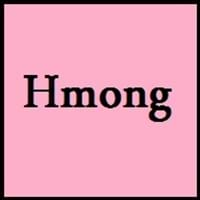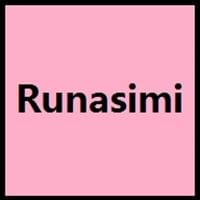Hmong and Quechua
Countries
China, Laos, Thailand, United States of America, Vietnam
Argentina, Bolivia, Chile, Colombia, Ecuador, Peru
National Language
China, Gambia, Laos, Thailand, United States of America, Vietnam
Bolivia, Ecuador, Peru
Second Language
Not spoken in any of the countries, Republic of Brazil
Not spoken in any of the countries
Speaking Continents
Asia
South America
Minority Language
Not spoken in any of the countries
Not spoken in any of the countries
Regulated By
Not Available
Not Available
Interesting Facts
- Hmong language may not be so popular at first sight, but it has rich history and various dialects are spoken by millions of people.
- Hmong language came from western part of China.
- One of the most widely spoken indigenous language in the America is Quechua.
- Quechua language has borrowed many words from Spanish.
Similar To
Not Available
Not Available
Derived From
Not Available
Not Available
Alphabets in
Hmong-Alphabets.jpg#200
Quechua-Alphabets.jpg#200
Writing Direction
Left-To-Right, Horizontal
Not Available
Language Levels
Not Available
Hello
Nyob zoo (Nyaw zhong)
Rimaykullayki
Thank You
Ua tsaug (Oua jow)
Solpayki
How Are You?
Koj nyob li cas (Gaw nyaw lee cha)
Allillanchu
Good Night
zoo hmo
Allin tuta
Good Evening
zoo yav tsaus ntuj
Wuynas nuchis
Good Afternoon
zoo tav su
Wuynas tardis
Good Morning
zoo thaum sawv ntxov
Wuynus diyas
Please
thov
Not Available
Sorry
Thov txim (Thaw zhee)
Pampachaykuway
I Love You
Kuv hlub koj
Kuyayki
Excuse Me
zam txim rau kuv
Pampachaway
Dialect 1
Hmong Njua
Ancash
Where They Speak
Laos
Peru
Dialect 2
Hmong Daw
Huánuco
Where They Speak
China
Peru
Where They Speak
Vietnam
Peru
How Many People Speak
Not Available
Native Name
Hmong
Qhichwa
Alternative Names
Mong
North La Paz Quechua
French Name
hmong
quechua
German Name
Miao-Sprachen
Quechua-Sprache
Pronunciation
Not Available
Not Available
Ethnicity
Hmong people
Quechua
Language Family
Hmong–Mien Family
Quechumaran Family
Subgroup
Not Available
Andean Equatorial
Branch
Not Available
Not Available
Early Forms
No early forms
No early forms
Standard Forms
Hmong
Quechua
Signed Forms
Not Available
Not Available
Scope
Macrolanguage
Macrolanguage
ISO 639 1
No data available
qu
ISO 639 2/T
Not Available
que
ISO 639 2/B
Not Available
que
ISO 639 6
Not Available
Not Available
Glottocode
firs1234
quec1387
Linguasphere
No data available
No data Available
Language Type
Living
Living
Language Linguistic Typology
Not Available
Not Available
Language Morphological Typology
Not Available
Agglutinative, Synthetic
All Hmong and Quechua Dialects
Most languages have dialects where each dialect differ from other dialect with respect to grammar and vocabulary. Here you will get to know all Hmong and Quechua dialects. Various dialects of Hmong and Quechua language differ in their pronunciations and words. Dialects of Hmong are spoken in different Hmong Speaking Countries whereas Quechua Dialects are spoken in different Quechua speaking countries. Also the number of people speaking Hmong vs Quechua Dialects varies from few thousands to many millions. Some of the Hmong dialects include: Hmong Njua, Hmong Daw. Quechua dialects include: Ancash , Huánuco. Also learn about dialects in South American Languages and North American Languages.
Hmong and Quechua Speaking population
Hmong and Quechua speaking population is one of the factors based on which Hmong and Quechua languages can be compared. The total count of Hmong and Quechua Speaking population in percentage is also given. The percentage of people speaking Hmong language is 0.13 % whereas the percentage of people speaking Quechua language is 0.13 %. When we compare the speaking population of any two languages we get to know which of two languages is more popular. Find more details about how many people speak Hmong and Quechua on Hmong vs Quechua where you will get native speakers, speaking population in percentage and native names.
Hmong and Quechua Language Codes
Hmong and Quechua language codes are used in those applications where using language names are tedious. Hmong and Quechua Language Codes include all the international language codes, glottocodes and linguasphere.





